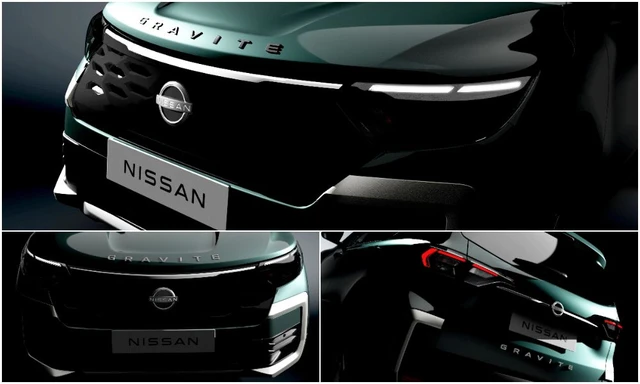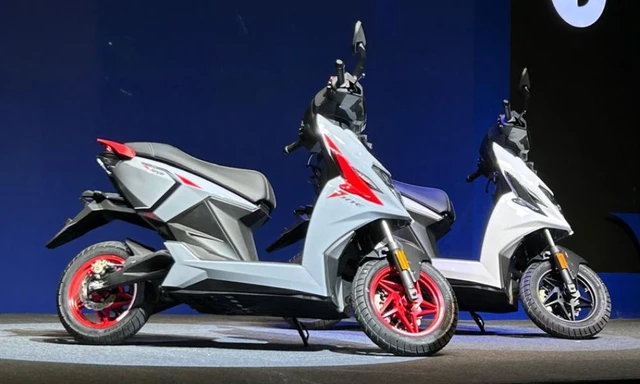Yamaha Motorcycle Logo History, Meaning, and Bike Emblem

- John Shore, a trumpet player, is the famous Yamaha logo inventor.
- Logo features a "Chinese phoenix holding a tuning fork in its mouth."
- The last update in the Yamaha logo and tuning fork symbol was in 2016.
We bet many don't know that the symbol in the Yamaha logo is a phoenix holding a fork! If that fact evoked curiosity in you about the Yamaha logo, wait till we uncover more about its history and meaning.
Yamaha Corporation is a Japanese brand that indulges in producing quality bikes and many more products! The three tuning forks are an indispensable attribute of Yamaha's logo. Let's dig deeper into the history and meaning of the Yamaha logo!
Also Read: Most Expensive Bikes in the World: From Vintage Collectibles to a Sculpture on Wheels - List 2022
Yamaha Logo History and Meaning
After Yamaha Corporation's forerunner, Nippon Gakki Co. Ltd., was established, the brand decided to adopt the tuning fork as its corporate identity. The Chinese phoenix holding the tuning fork in its mouth is a trademark logo for Yamaha. After several rounds of changes parallel to the company's growth, Yamaha standardized the emblem.
If you are not aware, the tuning fork is a tool that helps in tuning musical instruments. But you might be wondering why Yamaha uses three tuning forks! Well, the three tuning forks in Yamaha's logo symbolize the three pillars of its business – sales, production, and technology.
The logo also reflects the company's reputation for music and sound worldwide. Lastly, the brand wanted to convey three essential musical elements through this logo – rhythm, harmony, and melody.
You should also know that Yamaha Motor Co., the brand's sister company, uses red. On the other hand, Yamaha Corporation uses violet as its corporate colour.

Photo Credit: unsplash.com
Emblems of Yamaha Motorcycle
Apart from the difference in font colour, the emblems for Yamaha Motors and Yamaha Corporation also differ slightly. In the symbol for Yamaha Corporation, the tuning forks' tips lie within the circle.
On the flip side, the Yamaha Motor emblem features tuning forks, with their tips extending beyond the circle. Additionally, if you give both the symbols a good look, you'll notice that the 'M' in both logos are different.

Photo Credit: wallpapercave.com
Changes in Yamaha Logo Through the Years
- 1898 – The 1898 design was the iconic design that included the Chinese phoenix. The mark reflected Yamaha's aim for producing only world-class products.
- 1916 – The brand developed a trademark application only using the tuning forks.
- 1916 – It submitted a trademark application for the seldom use of tuning forks.
- 1927 – Yamaha developed a trademark for a rebranded tuning fork and Yamaha Veneer mark.
- 1934 – It designed an emblem intended for media, catalogues, newspapers, and ads.
- 1956 – Yamaha submitted a trademark application exclusively for musical instruments.
- 1959 – Yamaha submitted another trademark application exclusively for musical instruments.
- 1967 – This year brought the standardization of the range of marks. This white text type was the “reverse design.”
- 1980 – The “reverse design” of 1967 became the standard version of the mark.
- 1998 – Yamaha established a unique and standard version of the tuning fork marks.
- 2016 – This year, the company unified the tuning fork marks.

Photo Credit: unsplash.com
Were you surprised to learn the history and meaning behind the famous Yamaha logo?
Latest News
 Jaiveer Mehra | Jan 6, 2026Mahindra XUV 3XO EV Launched In India; Prices Start At Rs 13.89 LakhEssentially the successor to the XUV 400 EV, the 3XO EV is offered in two trim levels and solely with a 39.4 kWh battery.1 min read
Jaiveer Mehra | Jan 6, 2026Mahindra XUV 3XO EV Launched In India; Prices Start At Rs 13.89 LakhEssentially the successor to the XUV 400 EV, the 3XO EV is offered in two trim levels and solely with a 39.4 kWh battery.1 min read Jaiveer Mehra | Jan 6, 2026Nissan Tekton SUV World Premiere On February 4The Tekton will make its debut hot on the heels of the Gravite and will share its platform with the upcoming new Duster.1 min read
Jaiveer Mehra | Jan 6, 2026Nissan Tekton SUV World Premiere On February 4The Tekton will make its debut hot on the heels of the Gravite and will share its platform with the upcoming new Duster.1 min read car&bike Team | Jan 6, 2026New Bajaj Chetak With Hub Motor To Be Launched On January 14Expected to be positioned as a more affordable derivative of the iconic Bajaj scooter, the newest member of the Chetak family will be targeted at the TVS Orbiter and Vida VX2.2 mins read
car&bike Team | Jan 6, 2026New Bajaj Chetak With Hub Motor To Be Launched On January 14Expected to be positioned as a more affordable derivative of the iconic Bajaj scooter, the newest member of the Chetak family will be targeted at the TVS Orbiter and Vida VX2.2 mins read Jaiveer Mehra | Jan 6, 2026Nissan Gravite MPV To Debut On January 21B-segment MPV to share its underpinnings and powertrain options with the Renault Triber.1 min read
Jaiveer Mehra | Jan 6, 2026Nissan Gravite MPV To Debut On January 21B-segment MPV to share its underpinnings and powertrain options with the Renault Triber.1 min read Jaiveer Mehra | Jan 6, 2026Mahindra XUV 7XO Prices, Variants ExplainedFacelifted SUV is offered in a choice of six variants and with petrol and diesel engine options.1 min read
Jaiveer Mehra | Jan 6, 2026Mahindra XUV 7XO Prices, Variants ExplainedFacelifted SUV is offered in a choice of six variants and with petrol and diesel engine options.1 min read car&bike Team | Jan 5, 2026Updated Simple One Electric Scooter Launched At Rs 1.50 Lakh; 5 kWh Variant Promises Up To 265 KM RangeWith a series of changes made to the existing scooter, the start-up claims to have improved range, top speed as well as on-road behaviour of the Simple One.1 min read
car&bike Team | Jan 5, 2026Updated Simple One Electric Scooter Launched At Rs 1.50 Lakh; 5 kWh Variant Promises Up To 265 KM RangeWith a series of changes made to the existing scooter, the start-up claims to have improved range, top speed as well as on-road behaviour of the Simple One.1 min read
 Amaan Ahmed | Jan 3, 2026VLF Mobster 135 300 KM Review: Fun But FlawedA 125 cc scooter with Italian design and Chinese genes is a rare combination, and while some may be tempted to dismiss it because of its origins, the VLF Mobster shows 125s can also be exciting – but not without compromises.11 mins read
Amaan Ahmed | Jan 3, 2026VLF Mobster 135 300 KM Review: Fun But FlawedA 125 cc scooter with Italian design and Chinese genes is a rare combination, and while some may be tempted to dismiss it because of its origins, the VLF Mobster shows 125s can also be exciting – but not without compromises.11 mins read Preetam Bora | Dec 30, 2025TVS Orbiter Review: Real-World Performance and Range TestedThe TVS Orbiter is a promising electric scooter promising decent range, practicality and pricing. But is there any reason to avoid it? We spent a few days getting to know it better.9 mins read
Preetam Bora | Dec 30, 2025TVS Orbiter Review: Real-World Performance and Range TestedThe TVS Orbiter is a promising electric scooter promising decent range, practicality and pricing. But is there any reason to avoid it? We spent a few days getting to know it better.9 mins read Jafar Rizvi | Dec 24, 2025MG Windsor EV 38 kWh Long-Term Report: IntroductionThe Windsor EV has joined our garage, and before it settles into daily duty, I took it out to get a sense of what living with an electric car is like.4 mins read
Jafar Rizvi | Dec 24, 2025MG Windsor EV 38 kWh Long-Term Report: IntroductionThe Windsor EV has joined our garage, and before it settles into daily duty, I took it out to get a sense of what living with an electric car is like.4 mins read Seshan Vijayraghvan | Dec 23, 20252026 Kia Seltos Review: Formula Is Spot On, But Is The Timing Right?The 2nd-gen Kia Seltos has arrived, but it has the challenge of facing strong rivals like the Victoris and Sierra. The question is simple - Does it still have what it takes?9 mins read
Seshan Vijayraghvan | Dec 23, 20252026 Kia Seltos Review: Formula Is Spot On, But Is The Timing Right?The 2nd-gen Kia Seltos has arrived, but it has the challenge of facing strong rivals like the Victoris and Sierra. The question is simple - Does it still have what it takes?9 mins read car&bike Team | Dec 26, 2025Tata Punch EV Long-Term Second Report: Highway Performance, Pros & ConsAfter a week of living with the Tata Punch EV Long Range—including a proper Mumbai-Nashik highway test—we've learned what this little electric SUV is really made of.1 min read
car&bike Team | Dec 26, 2025Tata Punch EV Long-Term Second Report: Highway Performance, Pros & ConsAfter a week of living with the Tata Punch EV Long Range—including a proper Mumbai-Nashik highway test—we've learned what this little electric SUV is really made of.1 min read






















































































































